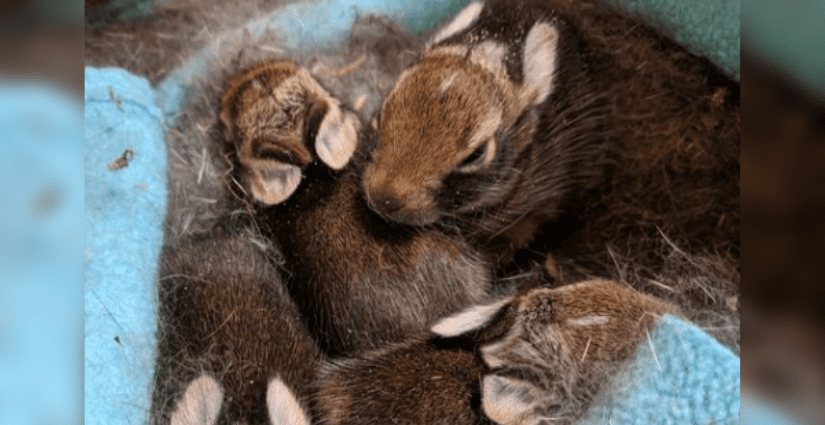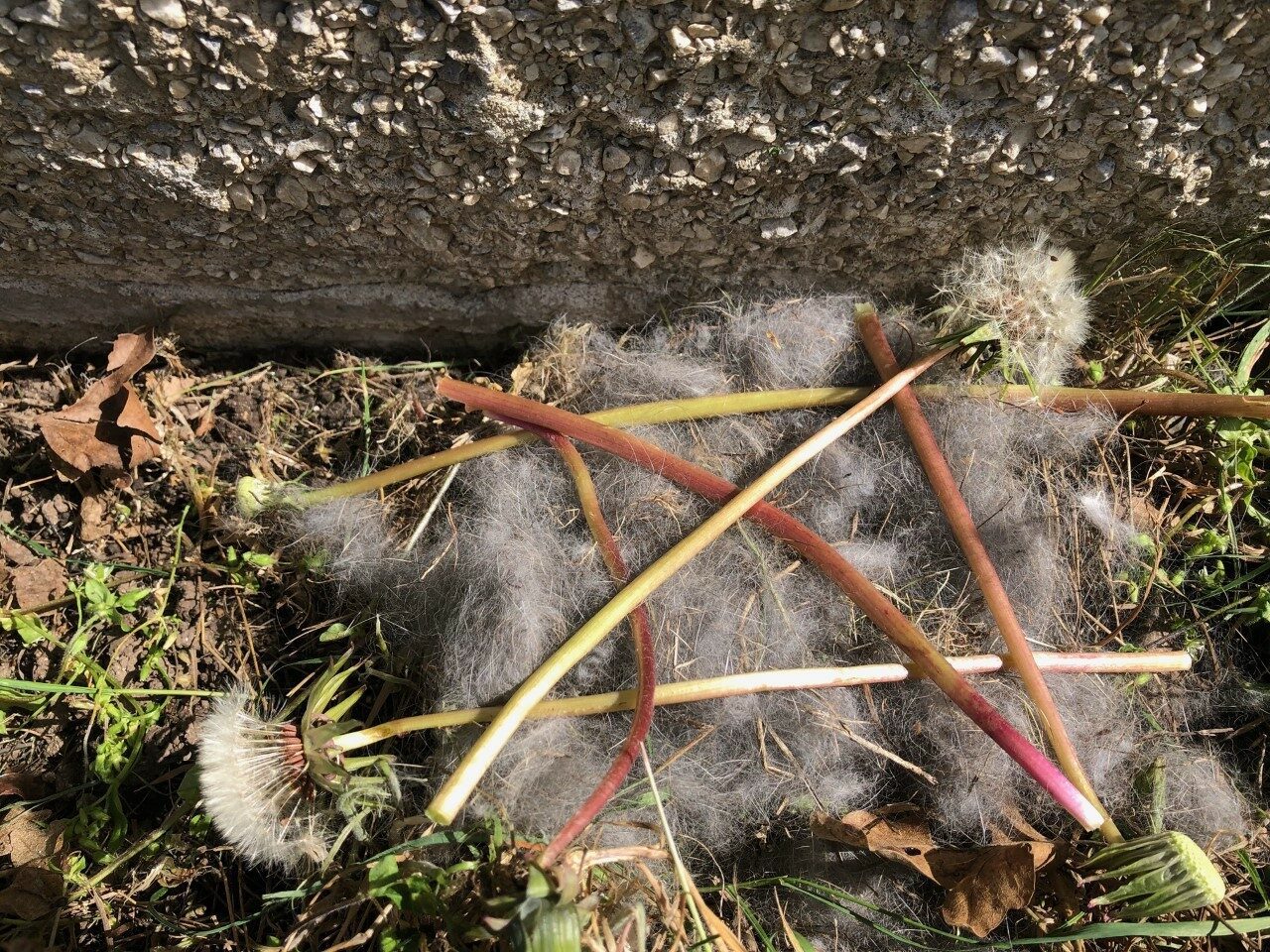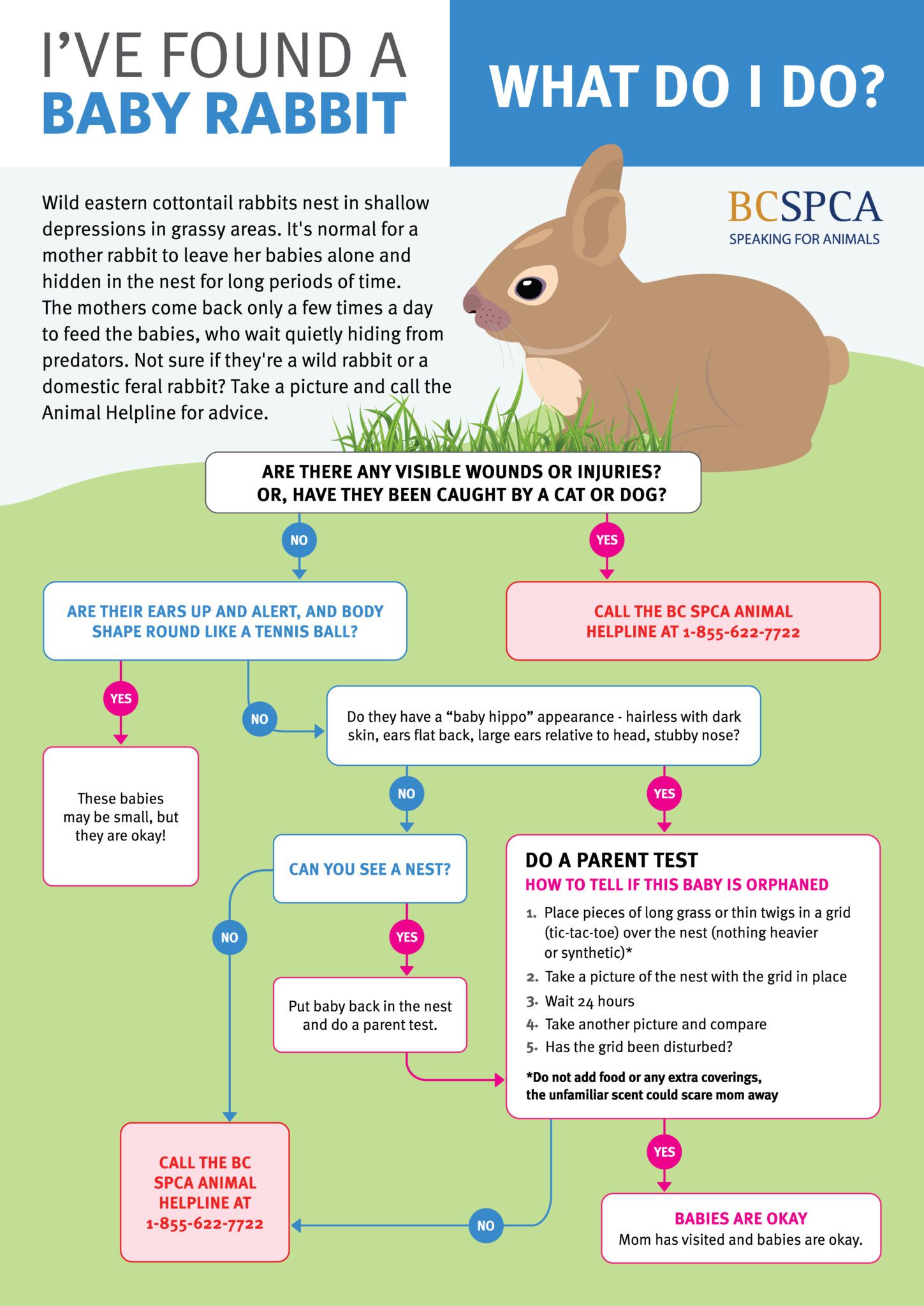Wild eastern cottontail rabbits nest in shallow depressions in grassy areas, which make baby rabbits vulnerable to lawn-mowers, dogs and free-roaming cats. Baby rabbits found alone don’t always need help – it’s normal for a mother rabbit to leave her babies alone and hidden in the nest for long periods of time. She will typically come back only a few times a day to feed the babies who wait quietly while hiding from predators.
Not sure if they’re a wild rabbit or a domestic feral rabbit? Learn more about telling the species apart or take a picture and call your local wildlife rehabilitation centre or the BC SPCA Animal Helpline at 1-855-622-7722 for advice.

Eastern cottontails are born pink and hairless, but develop dark fur very early. They have stubby noses, large ears relative to the size of their head, and their ears lay flat against their body. They have short tails (less than half body length), and front legs shorter than their back legs. All this combined gives eastern cottontail babies the appearance of a “baby hippo”.
A baby rabbit will need help if they:
- have obvious signs of injury (blood, wounds etc.)
- have been caught by a cat or dog
- are orphaned (do a parent test to confirm)
For minor disturbances, babies too young to be on their own can be placed back in the nest with the original nesting material – do a parent test to check that mom has returned. With parental care confirmed, it will only take a couple of weeks for the babies to grow up enough to leave the nest. Keep pets away and hold off on any more yard work until this time. If you’re unsure if they need help, or the babies (and any adults) are obviously injured (e.g., bleeding, broken limbs), call your local wildlife rehabilitation centre or the BC SPCA Animal Helpline at 1-855-622-7722 for advice.
Young eastern cottontails may appear very small, but they’re ready to be on their own very quickly!

These rabbits are very close to being able to survive on their own but are still too young to be without a returning parent – their pinned back ears and long bodies are tell-tale signs they still need to be cared for.

This young rabbit is fine to be on their own – their ears are up and alert and their body is round and shaped like a tennis ball.
To find out if a baby rabbit is truly orphaned, do a parent test.
Steps to do a parent test:
- Place pieces of long grass or thin twigs in a grid (tic-tac-toe) over the nest – use natural material rather than synthetic, and do not use heavier materials as the mother rabbit is unlikely to move them during her brief and delicate visits.
- Don’t add anything extra like food or coverings – because rabbits are prey species, new scents may scare the mom from returning, and supplemental food is not necessary and could upset their delicate systems.
- Take a photo of the nest with the grid in place.
- Wait 24 hours.
- Take another photo of the grid and compare it to the first.
- If the grid has been disturbed, the mom has come back to care for her babies. If the grid has not changed, the babies may need to go to a wildlife rehabilitator.
If you are having trouble assessing before and after photos when conducting a parent test, get in touch with your local wildlife rehabilitation centre or call the BC SPCA Animal Helpline for help at 1-855-622-7722.

Read more about rescuing wild animals.

